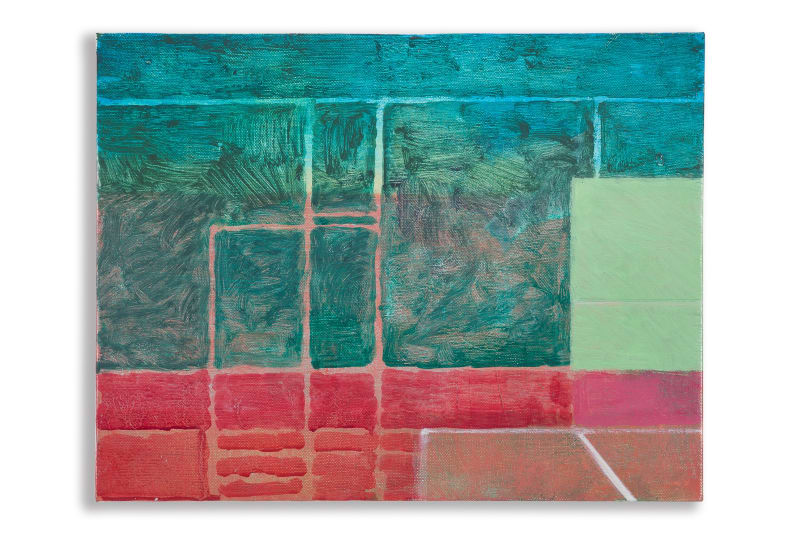''I have never ceased, for years, to return to these landscapes which are also my stay. I fear that I will end up being reproached, if it is not already done, seeking there an asylum from the world and from pain, and that men and their sorrows (more visible and more tenacious than their joy) do not count for much in my eyes."
"But these elements, whether I liked it or not, intervened, more or less far from consciousness, in what was forming in me around this word: "paradise."
Philippe Jaccottet, in Landscapes with absent figures, poetry/Gallimard
I am interested in the notion of landscape as a place of memories and History. Painting has structured our relationship with the landscape for several centuries and the landscape keeps in itself the memory of the earth's movement and that of human beings. It is this link that I attempt to trace. The ruins, the past and present utopias and the uncertainty of the future, place us in a kind of reading disorder and vulnerability. The great gap between the remains of the city of Carthage, the Roman villas and the district under construction of Bhar Lazreg where my studio was located with the buildings permitting the metal rods of reinforced concrete emerge in view of future construction higher, in my opinion, illustrates the idea of a moment in suspense, an "in- between" that I try in vain to put in shape.
Indeed, I only have a rather open idea of what the painting will become, that is to say uncertain, even unknown but the uncertainty and the hesitation are driving constraints to the creation, they push me to think differently to solve the pictorial problems. In this approach, I introduce a collection of images from personal photographs and a collective imaginary existing on the internet. Chosen for their echoes of a personal memory mixed with a kind of collective and acquired unconsciousness, these elements are like reminders or post-it notes that I keep and continue to observe for their pictorial potential. I examine these patterns on the surface of the canvas. The accumulated layers, partially erased, covered or reworked, leave traces that densify and affect the surface of the painting. This process of accumulation relates to the memory of my experience with it.
Each of these interventions enriches my technique, that is to say the operating mechanism between the technical, intellectual practice and the lived experience. Painting then becomes a place of projection and by the lines, the drawing and the colour, I build spaces. As a landscape artist I draw a place, a garden.
Janna or paradise is the place that one seeks and for lack of finding it or knowing already that it exists only in our imaginations, that one will try to delimit and to construct. It thus becomes by definition, a heterotopia, the other place, the concretized utopia of a space in rupture that one creates according to their own definition. But the image is already a representation, a step further and it is only a reflection.
The absence of figure and character, accentuates the strangeness of the scene that unfolds before the viewer. The action is in waiting, the moment in suspense. The spectator is thus the only witness and the only point of convergence of all the perspectives. From a first visual impact, he then appropriates the painting by trying to recompose the process, to understand what could occur, to apprehend what will occur.
He thus continues the story. De Gueule to the silver cross:
The knight carries a poetic charge within him. He is the wanderer; on a quest to convey childhood dreams. He is also in a way a vector between the Western and Eastern worlds since the Middle Ages. From the crusades, of course, of which the last one came to an end on the beach of La Goulette, from "the elsewhere", the knight brings back above all a memory, a memory which will come to imbue and feed the western phantasmagoria on the East until today.
Here, the turners, these headless horsemen are ghostly, only their attire seem to be real or palpable as is the rock. The landscape then becomes the support for the appearance of an icon, a memory, furtive, that of a fugitive herald.
Description or blazon of the colours or weapons found on the costumes of knights according to the specific language of heraldry invented in Europe from the second half of the 12th century.
Yann Lacroix Tunis, June 2021
Translated by Narjes Torchani

